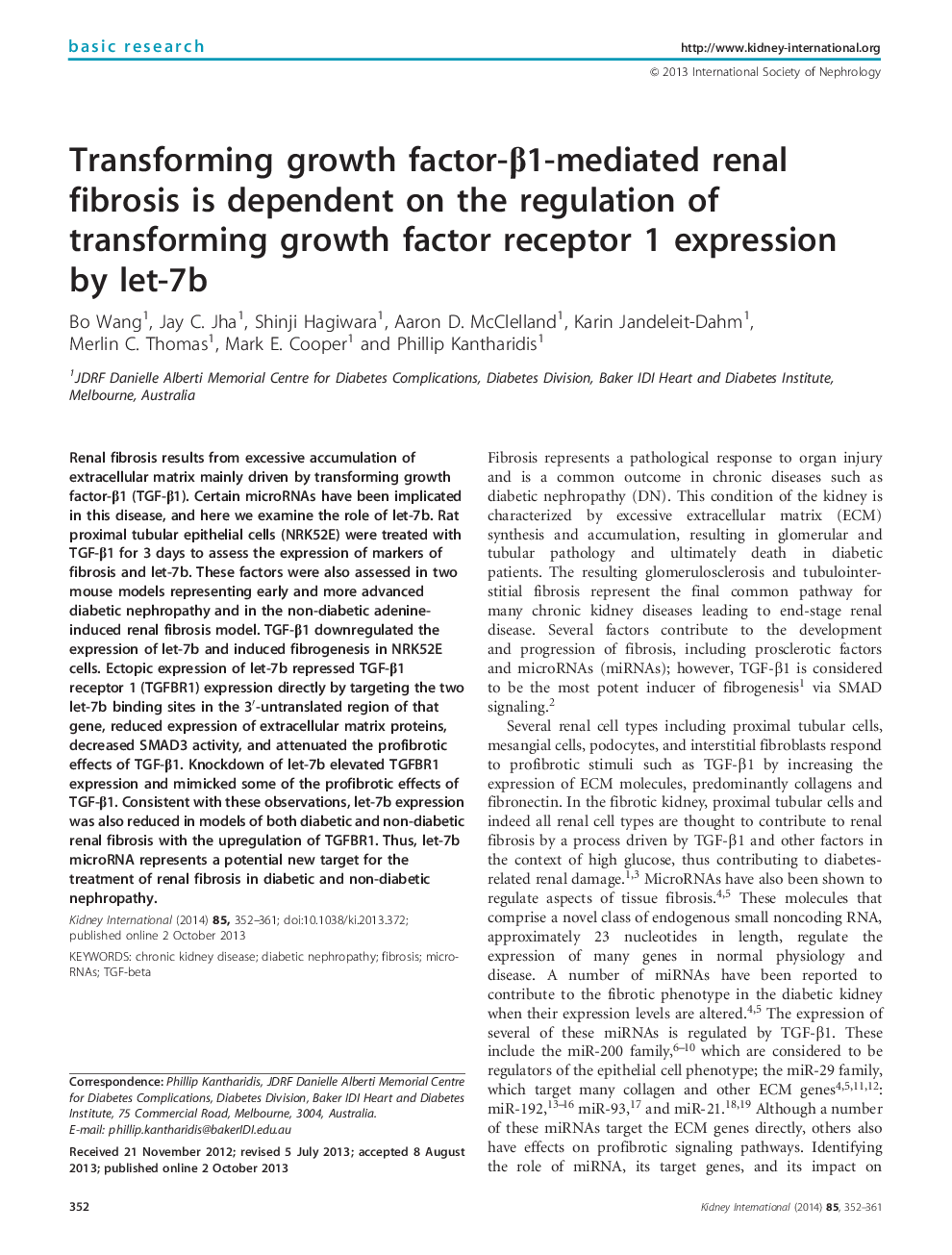| Article ID | Journal | Published Year | Pages | File Type |
|---|---|---|---|---|
| 6162392 | Kidney International | 2014 | 10 Pages |
Abstract
Renal fibrosis results from excessive accumulation of extracellular matrix mainly driven by transforming growth factor-β1 (TGF-β1). Certain microRNAs have been implicated in this disease, and here we examine the role of let-7b. Rat proximal tubular epithelial cells (NRK52E) were treated with TGF-β1 for 3 days to assess the expression of markers of fibrosis and let-7b. These factors were also assessed in two mouse models representing early and more advanced diabetic nephropathy and in the non-diabetic adenine-induced renal fibrosis model. TGF-β1 downregulated the expression of let-7b and induced fibrogenesis in NRK52E cells. Ectopic expression of let-7b repressed TGF-β1 receptor 1 (TGFBR1) expression directly by targeting the two let-7b binding sites in the 3â²-untranslated region of that gene, reduced expression of extracellular matrix proteins, decreased SMAD3 activity, and attenuated the profibrotic effects of TGF-β1. Knockdown of let-7b elevated TGFBR1 expression and mimicked some of the profibrotic effects of TGF-β1. Consistent with these observations, let-7b expression was also reduced in models of both diabetic and non-diabetic renal fibrosis with the upregulation of TGFBR1. Thus, let-7b microRNA represents a potential new target for the treatment of renal fibrosis in diabetic and non-diabetic nephropathy.
Related Topics
Health Sciences
Medicine and Dentistry
Nephrology
Authors
Bo Wang, Jay C. Jha, Shinji Hagiwara, Aaron D. McClelland, Karin Jandeleit-Dahm, Merlin C. Thomas, Mark E. Cooper, Phillip Kantharidis,
